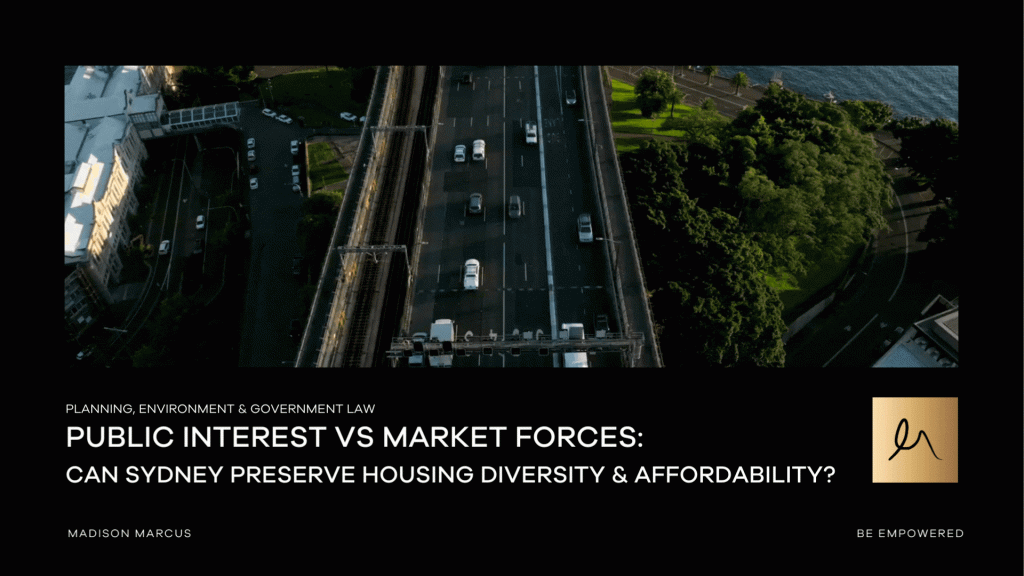The City of Sydney Council is often at the forefront of town planning policies designed to control housing diversity and affordability. The City’s latest initiative is designed to curtail an emerging trend in the City and East involving the conversion of smaller, affordable apartments to spacious, expensive apartments.
A current controversy concerning a development proposal at Billyard Avenue, Elizabeth Bay, is an example of the type of development the new controls are designed to prevent. The proposal at Billyard Avenue involves the demolition of an existing residential flat building containing 28 apartments and the construction of a new building containing 22 “large luxury units”. The development application is currently before the Land and Environment Court. Media reports of the case indicate that the social impact of the development is an issue in the proceedings.
The City of Sydney is proposing to amend the Sydney Local Environmental Plan 2012 to create a development standard that will prevent the redevelopment of existing apartment buildings if the redevelopment results in a reduction in the number of dwellings in an existing building proposed to be demolished or altered. The amendment is designed to prevent owners of existing residential flat buildings from demolishing and constructing a new building or altering the existing building if the result is a reduction in the number and size of the dwellings in the original building.
The genesis for the change is a resolution of the elected Council on 18 September 2024. The resolution records a view expressed by some councillors that “developers are redeveloping multi-dwelling apartment buildings that have traditionally been affordable due to their age and size to make way for fewer luxury apartments.”
Further background to the proposed changes is contained in a Planning Proposal report dated November 2023 published on www.planningportal.nsw.gov.au. The report explains that the Council reviewed development approvals dating back to 2018 and found that there were 24 approvals for the demolition or renovation of existing residential flat buildings that resulted in a net loss of 63 dwellings in the Council area. The review identified a further 9 development applications under assessment that proposed a net reduction of 124 dwellings. In some instances, the redevelopment involved the replacement of existing apartments as small as 32 sqm with apartments up to 192 sqm.
The Planning Proposal contains a draft version of the proposed new clause. At this stage, the new clause will apply to all development (including demolition) of an existing residential flat building or an existing mixed-use development that contains three or more dwellings. The objective of the new control is to “minimise the loss of housing diversity resulting from the consolidation of existing dwellings or the demolition of existing housing for the construction of new dwellings”.
The Council (or the Land and Environment Court) must be satisfied that a proposed redevelopment of an existing building will not reduce the number of dwellings by greater than 1 dwelling or 15% of dwellings in the development (rounded to the nearest whole number). There is an exception for the development of an existing residential flat building or a mixed-use development that contains shop-top housing if the decrease in dwellings will occur as a result of a change of use of residential floor space to non-residential use.
No changes are proposed to the existing maximum height of buildings or floor space ratio controls for residential flat buildings. The Planning Proposal report states that the new provision is a development standard capable of being varied under clause 4.6 of the SLEP 2012.
A delegate to the Minister for Planning and Public Spaces issued a conditional gateway determination for the Planning Proposal on 5 April 2024. The amendment has yet to reach the public exhibition stage. Until such time as the Planning Proposal is publicly exhibited in accordance with the Environmental Planning and Assessment Act 1979, the changes are not a mandatory consideration in the assessment of a development application to which they might otherwise apply.
The Minister’s gateway determination requires the Council to undertake further analysis prior to public exhibition to demonstrate how the proposed numerical standards were selected and why these standards are the best mechanism to achieve the outcome of preserving housing diversity and affordability. The Minister also requires the amendment to include a savings and transitional arrangement for applications lodged prior to the new provision taking effect.
At a higher level of analysis, the new controls are a type of town planning regulation that seeks to encourage affordable housing by prohibition rather than conditional (bonus) permissibility. The proposed controls take a similar approach to Part 3 of State Environmental Planning Policy (Housing) 2021) which is a long-standing control aimed at retaining existing affordable rental housing. By contrast, bonus style or inclusionary controls encourage developers to construct affordable housing by providing an incentive (usually in the form of additional floor space) to carry out development. Whether one style of control or the other is more successful in addressing the housing crisis is a moot point.
MM Website Enquiry Form
Form used to capture all MM website enquires. Will be used in Monday and Mailchimp via Zapier
"*" indicates required fields






